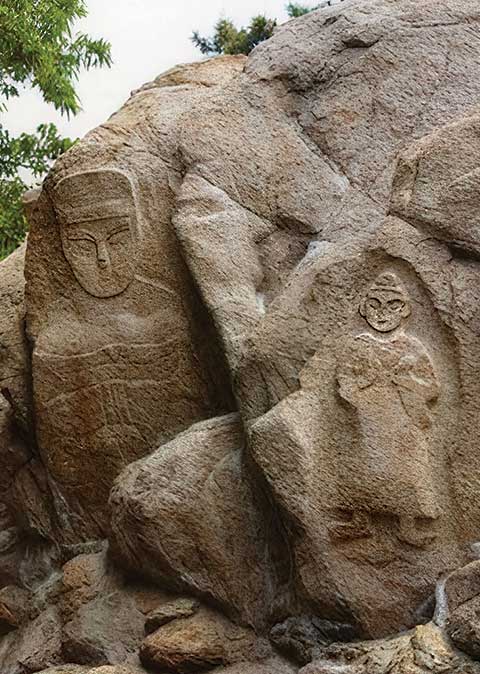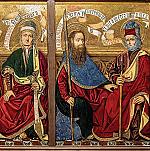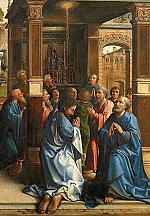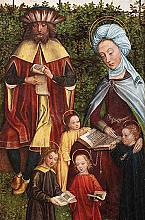Did Thomas evangelize China?

[ABOVE: Kongwangshan sculptures—Quizlet.com]
Some recent publications assert that Thomas not only evangelized in India but also as far east as ancient China. These claims cite a Syro-Malabar (eastern Catholic tradition rooted in the Malabar Coast of India) liturgical prayer that remembers Thomas, through whom “the Chinese and the Ethiopians were converted to the truth.”
Recently a few Christian authors have picked up on this prayer and made it part of their arguments for an early Christian presence in China.
Two such proponents of Thomas visiting China are Wang Weifan, a Chinese seminary professor, and Pierre Perrier, a Catholic layman from France. The latter has gone so far as to give a precise chronology of Thomas’s visit to China, claiming that in AD 64 he traveled up the Yellow River from Lianyungang via Xuzhou and Kaifeng to Luoyang, where he founded a church in 68 before returning to India and martyrdom in 72.
THE EVIDENCE?
These authors base their theory on rock carvings on Kongwang, a mountain in Lianyungang, which they date to the first century and interpret as images of Thomas, the Virgin Mary, and the Chi-Rho symbol; Han Dynasty tomb carvings in Xuzhou that purportedly show biblical stories as well as a Passover lamb and the Christian fish symbol; a claim that the medieval Jewish community in Kaifeng actually goes back to the early Christian period; and reinterpreting the history of the Buddhist White Horse Monastery in Luoyang, which they see as originally a Christian church founded by Thomas.
However, these claims have no basis in fact. The Lianyungang carvings may date to the first century, but they are generic Chinese figures, and no Chi-Rho symbol is to be found. This Greek abbreviation would have been meaningless to Semitic-speakers like Thomas! The Han-era tombs of Xuzhou have typical Chinese decorations of the period with nothing to indicate Christian influence. Furthermore the Jewish community in Kaifeng was founded only in the tenth or eleventh century. And, finally, no evidence exists that the White Horse Monastery in Luoyang was ever anything other than a Buddhist temple. The truth is that we have no evidence of a Christian mission to China in the earliest centuries.
EXCHANGING AND EVANGELIZING
Both overland and maritime trade did exist between China and the West in Roman times. Yet this trade was segmented: Romans and Arabs sailed as far as India; Indians or Malaysians took the goods from there inland, or farther across the Bay of Bengal to Malaysia; Malay or Chinese traders then took the products to the ports along the South China Sea, and then inland. The overland route was just as compartmentalized. Chinese goods were passed on to Kushans (in modern Afghanistan), who sold them to Parthians and Arabs, who in turn passed them on to merchants from the Roman Empire. As far as we know, virtually no traders went continuously from the Mediterranean to China.
Generation by generation Christians did spread the gospel eastward, and individual Christians may have penetrated China. We have no evidence, however, of a Christian church in China in the first five centuries. Rather, Christianity’s entrance into China was an extension of the larger picture of Christianity’s slow permeation of Mesopotamia and Central Asia via the areas along the Silk Road.
By Glen L. Thompson
[Christian History originally published this article in Christian History Issue #156 in 2025]
Glen L. Thompson, retired professor emeritus of church history at Asia Lutheran Seminary and author of Jingjiao: The Earliest Christian Church in ChinaNext articles
Courage, zeal, and faithfulness
Accounts of Judas Thaddeus, Simon the Zealot, and Matthias help explain the Gospel’s far reach
Rex D. ButlerSupport us
Christian History Institute (CHI) is a non-profit Pennsylvania corporation founded in 1982. Your donations support the continuation of this ministry
Donate







